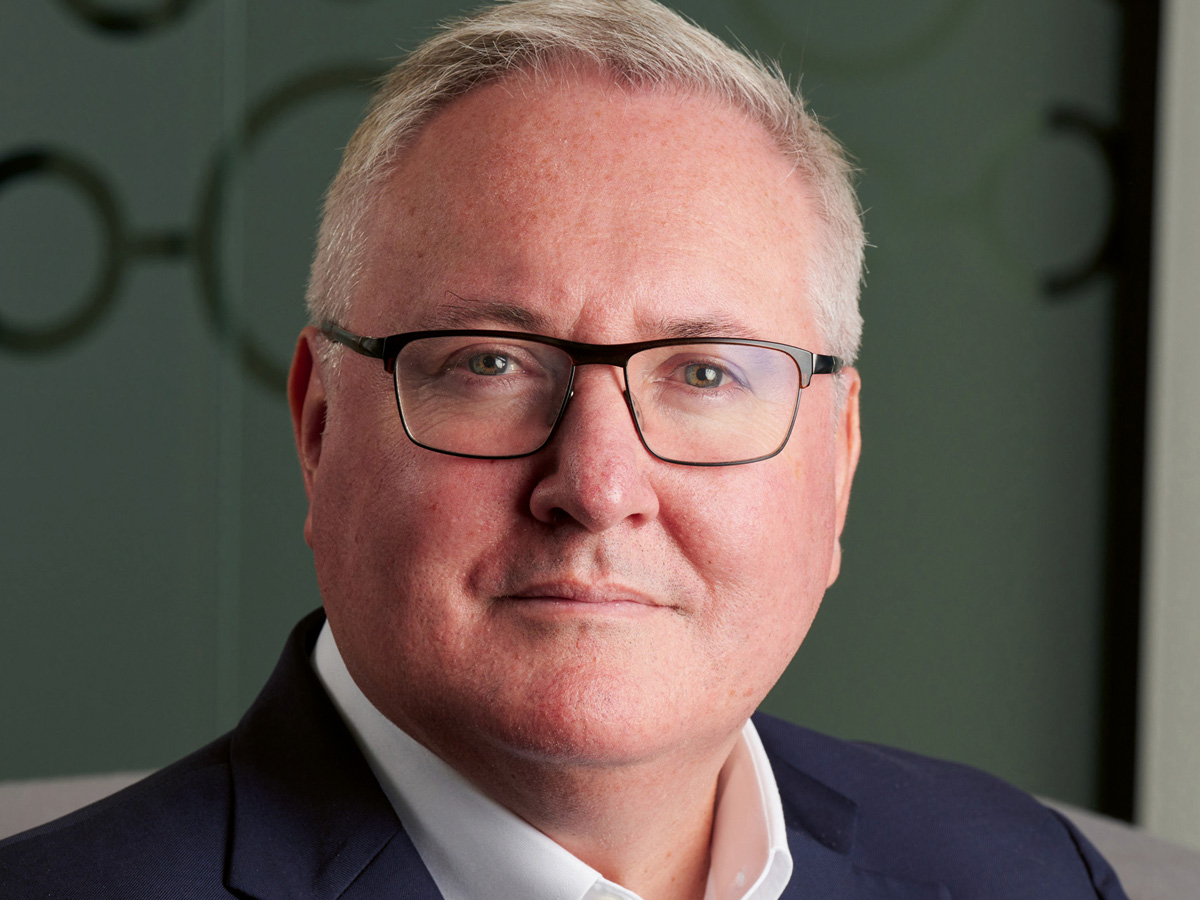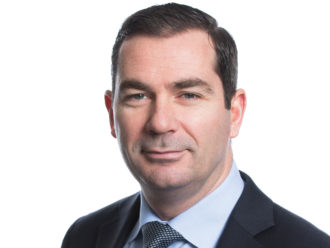How would you sum up your first eight months at Border to Coast?
It’s been great. I knew some of the Border to Coast team, and several of its partner funds, before I came here, which helped. I’ve enjoyed the energy of the place and the commitment of its people.
Border to Coast has come a long way since it was launched five years ago and is a well-resourced pool, able to provide a broad suite of capabilities through our in-house team and external managers. In my first few months here, I’ve been focused on getting to understand and know the investment team, as well as our partner funds.
What have you learned about how Border to Coast operates since you arrived?
A key part of my coming here was the recognition that Border to Coast has long-term backing from its partner funds and is already managing significant assets across key asset classes – I have always philosophically believed that you need to be in close proximity to the markets to be an effective investor.
As an investor, the team benefits from combining bottom-up insights with top-down macro thinking and more strategic thinking on secular trends, and what this means for our partner funds.
We certainly benefit from a combination of the insights you get from being a direct investor with the engagement you get with some of the best managers in the world.
Why did that model interest you?
Given the evolution of the corporate DB market, it’s increasingly rare to find institutional investors in the UK who have expanding growth engines with significant allocations across public and private markets.
That, along with a commitment to active management, internal and external, is the best combination in terms of managing money and, for me, is an incredibly exciting opportunity.
I believe this framework gives the LGPS a long-term competitive advantage over other institutional investors and wanted to play a part in it.
Looking at other investment models, are there any lessons from the LDI crisis last year?
It’s a useful reminder that leverage is leverage, regardless of how some try to package it. While there were some short-term opportunities that arose, the LGPS is a long-term investor and so isn’t directly focused on large-scale hedging dynamics.
What are the organisation’s biggest challenges?
Border to Coast has just turned five and it’s incredible what’s been achieved in this time. From an investment perspective, we are thinking about how we evolve our investment team and our broader capabilities. There are now about 140 people in the business – around 40 of which have joined in the past 12 months. We are combining the experience of veteran LGPS internal portfolio managers with those from the private sector.
A key issue for me is to blend these individuals, with the right culture and approach to collaboration, and ensure we continue to provide good idea generation and challenge the portfolio construction process, implement that well and ultimately meet the expectations of our partner funds.
So continuing that culture and growth is one of your biggest priorities?
The priorities of our partner funds are simple: we are an active investor with 14 investment propositions across public and private markets. Our priority is to beat the relevant indices and to provide our partner funds with the support they need in delivering their investment strategies. We have been successful over the past five years, but we need to be constantly on our toes.
As part of our development, we’ve been working on how to challenge our own ways of thinking. This is through the evolution of our research team: expanding out from single stock to multi asset, as well as thinking about alternative research.
However, we also do this by inviting a range of non-consensus thinkers who will interact with us and challenge our thinking. That is something I have encouraged over the past six months. It is healthy for portfolio managers to have conviction, go home and come in the next day and start questioning their thesis for a position. To help that process we want access to people in the market with interesting insights and with a different picture of the world.
What do the non-consensus thinkers come up with?
Going into this year everyone was expecting to have a challenging time. Volatility may be higher and earnings will gradually fall, but things did not turn out that way. Obviously, some non-consensus thinking was good for us and I am happy to see that, year-to-date, our public market fund strategies continue to be ahead of their benchmarks.
We are also engaging more on longer-term secular themes. This month we had a great call with a large UK asset manager, who talked about integration of artificial intelligence (AI) in their research process.
It is important for us on the investment and infrastructure sides of the business to get to grips with some of the technology that is coming through as this is happening at a rapid rate. I don’t know if AI is going to be any bigger than the dotcom period from 20 years ago, but it could be material. Getting to grips with that is important.
Have you shifted your portfolio as a result of these thinkers?
We have updated our research and have moved to a global sector model. Before we had an individual regional approach, such as Europe and US, but now it is a more formalised global sector approach. Given the pace of change and complexity we are seeing in the technology sector alone, this is important. We now have experts who are deeper in this space and are not just reacting to it, and I want to see our private equity PMs interacting with our equity researchers on key themes.
To be clear, Border to Coast was functioning very well before I arrived. But this is about ensuring the investment team comes together more to debate topics from different angles.
You have highlighted how you are exceeding the original ambitions for pooling, having pooled 83% of your 11 partner funds’ assets. What’s next?
The main reason we have reached 83% is that we didn’t launch a fund and then market it. From day one, we have worked to understand the collective needs of our partner funds and develop the propositions on their behalf.
Real estate is the last large-scale asset class for pooling which we are focused on this year and next. As chief investment officer, I am not here to expand the assets, I’m not obsessed with getting to 100% – it’s about getting the best performance on those assets we manage today.
If you will never get to 100%, what do you make of Jeremy Hunt’s requirement for LGPS funds to pool all of their assets by 2025?
There can be practical reasons why you can’t pool 100% of the assets – legacy private markets and micro-local investing are examples. We are focused on how we manage the assets as well as possible.
What I would say though, is that pooling is delivering real value for our partner funds – no individual UK pension fund could match the scale and scope of what we are able to do. In coming together, our partner funds have highlighted the benefits of a collective approach.
But can you understand why some funds earlier this year wanted to leave their pool?
I’m not going to talk about what has happened elsewhere – our philosophy is built on a common purpose and that has worked out pretty well.
Border to Coast’s annual report revealed that collective net savings are on track to reach £340m by 2030 – how are you achieving this?
This is a standard methodology from the Department for Levelling Up, Housing and Communities that all funds need to complete. A large part of our savings are driven through our private market programme, which is currently £12bn. As the years progress, the savings will increase as we expand new propositions.
Cost management is important but over time we would prefer to focus on generating good excess returns will have a more material impact for pension funds, and the wider value we deliver – whether through our collective voice or helping our partner funds in areas such as the journey to net zero.
Why are you focusing on private markets?
It is important that we have significant growth engines. Structural diversification away from equities into private markets has been quite material over the past five to 10 years. This is a key element of our partner fund strategies and we have built a great in-house team to allow us to deliver it on their behalf.
What do you make of the government’s desire to increase pension fund commitment in infrastructure and the leveling up agenda?
Investment strategy obviously remains the responsibility of our partner funds. That said, we already support them to invest in these areas, and we’ve just announced our UK Opportunities strategy. This will launch next year and will include social property, infrastructure, social bonds, renewables and thinking about growth in private equity and private debt.
In our view, if you want to get a decent amount of assets invested in the UK, it is better to take a holistic view of putting capital to work – it’s about diversification and reasonable return. We anticipate we’ll end up working with around eight to 10 partners in targeting good returns but also capturing wider metrics – local employment, apprenticeships, residential units built, local infrastructure delivered, and so on.
What new investment approaches you are looking at and why?
For UK Opportunities, we want to make sure there are good regional opportunities – and we’re not going into this with a fixed percentage regionally or in certain council boroughs. That is not the way to build a well balance portfolio.
We are going to work with a select group of specialist managers to consider all appropriate opportunities. Some will hopefully come through a bottom-up assessment approach, from our partner funds and elsewhere.
Social housing is an area we are looking to invest in. But we want to make sure there are good discernible metrics about how we are making a difference. In some cases that could be employment, in others it could be the green agenda and capturing those metrics.
We want to be open to idea generation from managers and look at things on a level playing field basis, with no structural bias to begin with.
The criticism is that there is frequently a lack of such opportunities to invest in.
There can be, but that is why a diversified approach is better. We will look for a strong economic return as our principal driver for investing. It will not make us feel good if we are investing in something that will not make us money just because it is a social good. It has to meet the investment returns required by our partner funds.
You launched a new programme of engagement on the just transition: what does this involve and why is it important?
Just transition is the integration of the social dimension into climate strategies, including mitigating social risks. For us, engagement is part of our investment approach, and it’s about how you get the best investment returns from your portfolio.
A just transition is good at making you think through the implications of the energy transition. So, for example, we want to make sure banks make the right decisions and understand any social impact or impact on their stakeholders.
We work with a range of organisations on this, such as The Grantham Institute at the London School of Economics. We are also focused on initiatives that we feel are important ESG themes.
For example, we partner with Rathbones on modern slavery. There were 12 companies identified as failing on modern slavery. We have engaged on that, and they have adjusted their policies; this shows engagement works and can drive real change.
We have also been engaging with oil companies more directly. We tell them in advance that we will vote against them unless they instigate change. We have a well-resourced responsible investment team that is fully integrated into our investment process – and ESG and managing the risks and opportunities climate transition brings is fully embedded in that.
Data is an issue every investor cites as a problem within the ESG narrative, so how can that be addressed?
Data is a real challenge. The simple reality is that larger firms are better positioned with resources to provide data, but smaller cap firms aren’t. This is something we need to change. I’ve seen initiatives where companies receive a discount on debt pricing if they provide more ESG data. But the simple truth is that all companies need to recognise that there is an upside for them if they engage.
So engagement is the best way to move the dial?
Yes. If you disinvest, you are out of the game. Why would a company listen to someone who doesn’t own their stock? De-investment can create an initial big splash, but the splash dies away and you are no longer a factor for management – but you still remain exposed to the real world risks of climate change. For us, driving change in the real world is the best way to manage the risk of climate change, and engagement is fundamental to this.
What are you focused on going forward?
We’ve built the largest asset manager outside of London and Edinburgh, and we have an exciting future. My focus will continue to develop, support and evolve the team to ensure that, as a centre of investment expertise, we can support our partner funds.





Comments